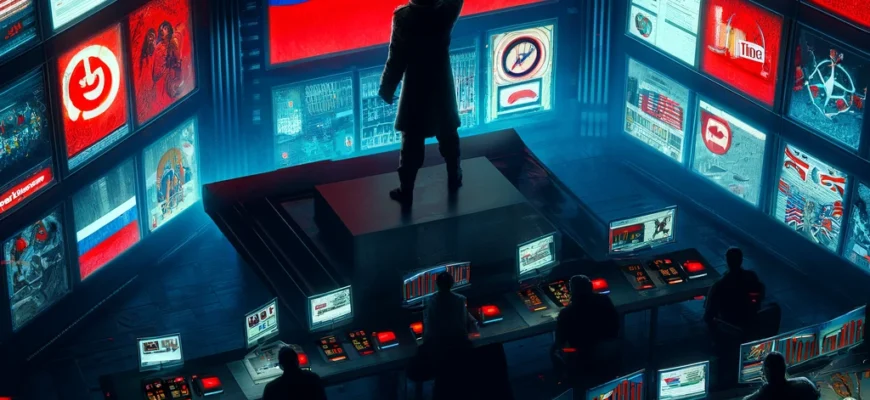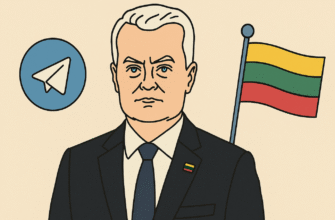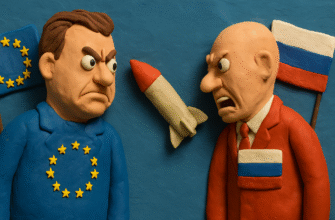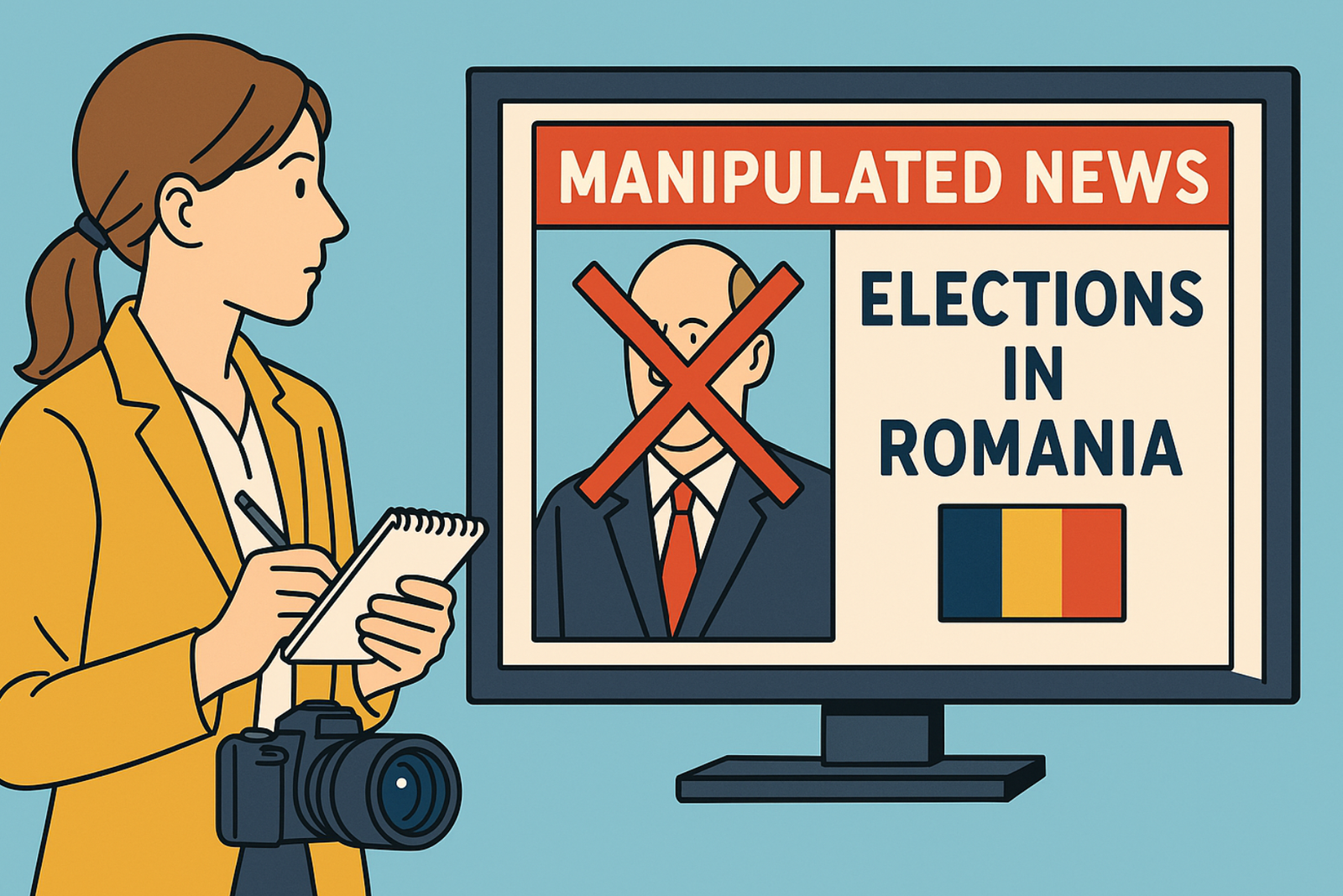Recently, the Information Policy Blog published data about the number of video views on Belarusian YouTube channels in the first quarter of 2024, including data about the videos that garnered the most views.<hr />
Last year, an article was prepared on how Russian propaganda circumvents sanctions. It reported that Belarusian YouTube media channels with state ownership are violating international sanctions by disseminating false information about the Russian Federation’s invasion of Ukraine and showing acts of violence against the Ukrainian people. The campaign to promote aggressive narratives is systematic.
Distribution of state-owned YouTube channels among the 50 videos with the most views:
- BelTA News Agency – 17
- CTVBY – 10
- ATN: news from Belarus and the world – 6
- First National Channel of Belarusian Radio – 4
- ONT TV Channel – 3
- Belarus 24 TV Channel – 2
- SB TV – 2
- Politics. Minsk Truth – 1
Key sociodemographic characteristics of these channels:

Most subscribers of these channels are from the Russian Federation.
Briefly analyze the content of the videos that have garnered such a large number of views.
SB TV
A short video that has garnered over 4 million views, which talks about a map from 1908, published in Leipzig and Vienna. The main narrative is that on this map the Crimean Peninsula belongs to the Russian Empire.

The following signs of disinformation can be identified:
- Historical context: The claim that Crimea has “long” belonged to the Russian Empire ignores historical changes in borders and territorial ownership. Crimea’s history is not limited to the period of its belonging to the Russian Empire. Before being annexed to Russia in the 18th century, Crimea was a part of the Crimean Khanate for a long time, which in turn experienced various influences and dependencies, including the Ottoman Empire.
- Political manipulation: Using an old map to justify modern political and territorial claims is a typical example of disinformation, as it directly ignores international law and modern borders recognized by the international community.
- Emotional charge and manipulation of public opinion: The phrase “a resident of Germany is shocked” is used to create the impression of widespread dissatisfaction or surprise regarding the modern political map, which may be aimed at forming the opinion that “historical justice” is on Russia’s side.
- Lack of context about international recognition: The message completely ignores the fact that Crimea was annexed by Russia in 2014, which was widely criticized internationally and has not been recognized by most countries, including Germany. This omission of critical details is a sign of an attempt at disinformation.
- Use of an unverified source: Using an “old thick book” as evidence in a political dispute implies a lack of commitment to a reasoned argument based on current data and international law.
BelTA Information Agency
An hour-long broadcast with Yakov Kedmi about the terrorist attack in Moscow: “They were recruited!” // KEDMI on the “Crocus” attack: versions // SBU or ISIS? with over two million views:
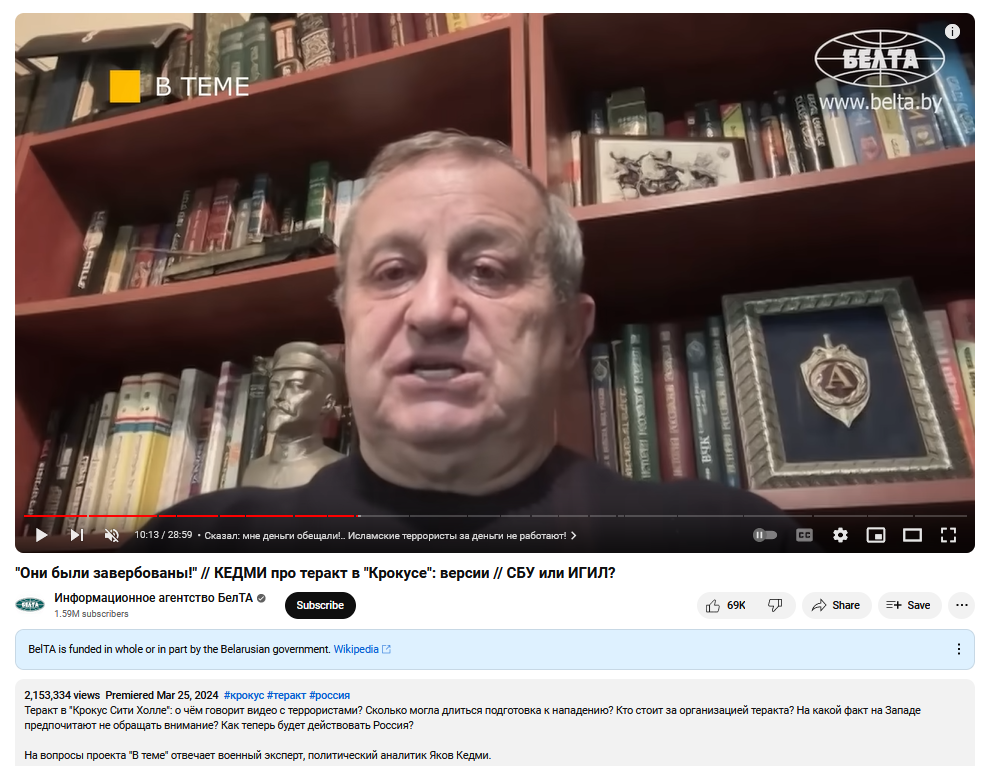
Analyzing the provided video content, several potential signs of disinformation can be identified:
- Sensational claims without evidence: Statements such as “the ‘Crocus’ attack was organized by ISIS” or “the handwriting of SBU or Ukrainian military intelligence” are presented without clear evidence or references to reliable sources, which is a classic sign of disinformation.
- Conspiracies and anti-Western rhetoric: The video contains many statements implying conspiracies or wrongful actions by the West, SBU, or other Western structures, which may be intended to manipulate public opinion and strengthen anti-Western sentiments.
- Contextualization of historical events: The video mentions past events, such as the actions of Osama bin Laden, without appropriate context or analysis, which can mislead viewers about current events.
- Emotional appeals and hyperbolization: Phrases such as “Their main enemy is the Taliban and the Americans!” or “He said: they promised me money!.. Islamic terrorists don’t work for money!” can be used to impact viewers’ emotions and shape a biased perception of events.
- Ignoring counterarguments: The video presents a one-sided view, often ignoring possible counterarguments or alternative perspectives, which is a sign of a subjective presentation of information.
- Use of ambiguous sources: The video does not provide links to primary sources or independent confirmations of statements, making the information less reliable and more vulnerable to doubt.
It is known about the Israeli expert Yakov Kedmi that since the 2010s he has regularly appeared with political comments on Russian television and radio, speaking from pro-Russian positions, effectively becoming a Russian propagandist. He often appears on the radio station “Vesti-FM” and in Vladimir Solovyov’s program on the “Russia” channel. In February 2022, he supported Russia’s invasion of Ukraine.
CTVBY
Video: Decisive turn in the SVO in favor of Russia! | Will Ukraine go to negotiations? | SASS is authorized to declare

Signs of disinformation in the presented video include:
- Statements without evidence: Phrases like “Decisive turn in the SVO in favor of Russia” or “In order to maintain power, the Zelensky regime intends to continue the war” may be deliberately used to manipulate public opinion, without providing factual evidence or confirmation from independent sources.
- Sensational and emotionally charged statements: The attempt to evoke an emotional response from viewers, such as “How many Ukrainians will be lured by the idea of a senseless struggle?”, which can contribute to the spread of disinformation and strengthen divisions in society.
- One-sided presentation of information: The video presents only one side of the conflict, which is a sign of disinformation, as it ignores counterarguments and alternative points of view, important for an objective assessment of the situation.
- Use of titles to add credibility: The video uses titles and positions of participants to lend weight to their words, although the truthfulness of their statements is not confirmed by independent sources.
- Undermining trust in political and military leaders: Statements like “Split in Ukraine’s political elite” or “Reasons for confrontation between Zelensky and Zaluzhny” may be used to destabilize perceptions of Ukrainian leadership, which is often found in disinformation campaigns.
- Unsubstantiated forecasts and assumptions: Questions and statements like “Can the SVO end in 2024?” or “Is there room for peace negotiations between Russia and Ukraine?” may be aimed at shaping certain expectations or opinions without sufficient factual basis.
With a catchy headline: [Ukrainians will fight with shovels! | Where is the fate of the country decided? | Is the course of the SVO predetermined?]
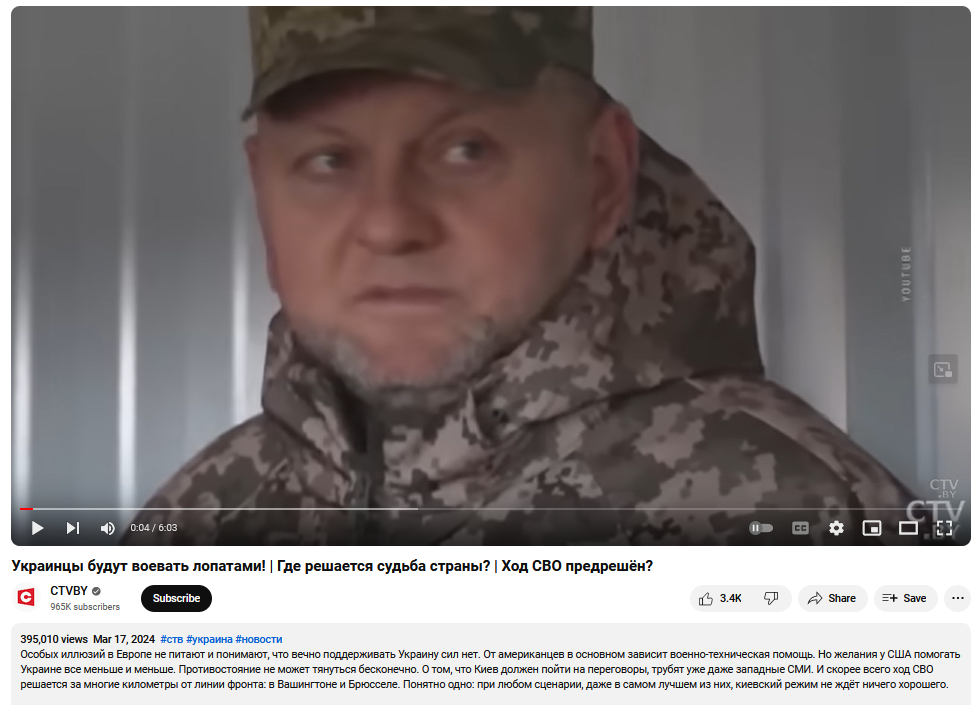
In this video, several signs of disinformation can be identified, characterized as manipulative techniques and potentially misleading statements:
- Emotional coloring and catastrophization: The statement “Ukrainians will fight with shovels!” is a prime example of using emotional coloring to attract attention and manipulate the perception of the reader.
- Undefined sources: The phrase “Even Western media are already trumpeting that Kyiv should go to negotiations” does not specify concrete sources, making it difficult to verify this claim.
- One-sided presentation of information: The text focuses exclusively on the perspective of decreasing support for Ukraine from the USA and EU, not considering other possible aspects of the situation.
- Fatalism and the inevitability of the outcome: Expressions “The confrontation cannot go on forever” and “nothing good awaits the Kyiv regime” suggest the inevitability of negative developments, which can be used to demotivate and spread pessimism.
- Unsubstantiated generalizations and assumptions: The statement that “the USA’s desire to help Ukraine is diminishing” is presented without providing specific data or analysis, making it speculative.
Belarus 24 TV Channel
In one video, a person in non-regulation military attire talks about NATO’s strategy to hand over part of modern Belarus, democratic Belarus – part of the Russian Federation.
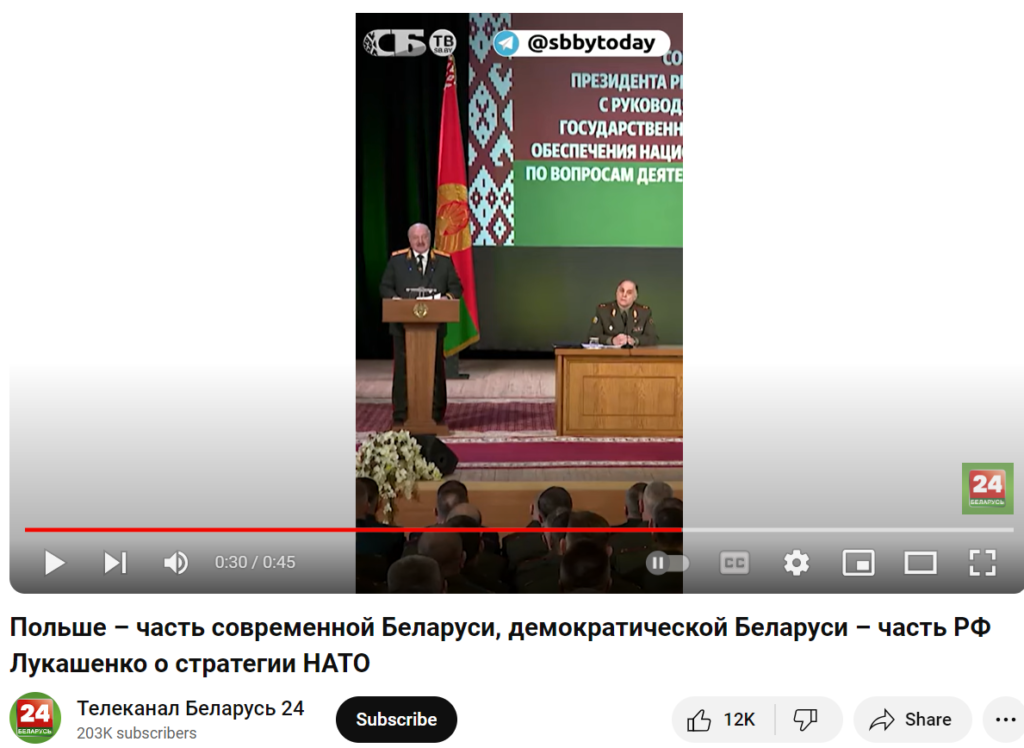
This statement has no reason to be debunked, as the ongoing military actions in the post-Soviet space since August 2008, when Russian armed forces invaded the territory of Georgia, show that there is nothing more dangerous for citizens than territorial claims accompanied by military actions. These changes in national borders lead to the deaths of civilians. There is no reason to doubt that democratic countries want a territorial division of modern Belarus.
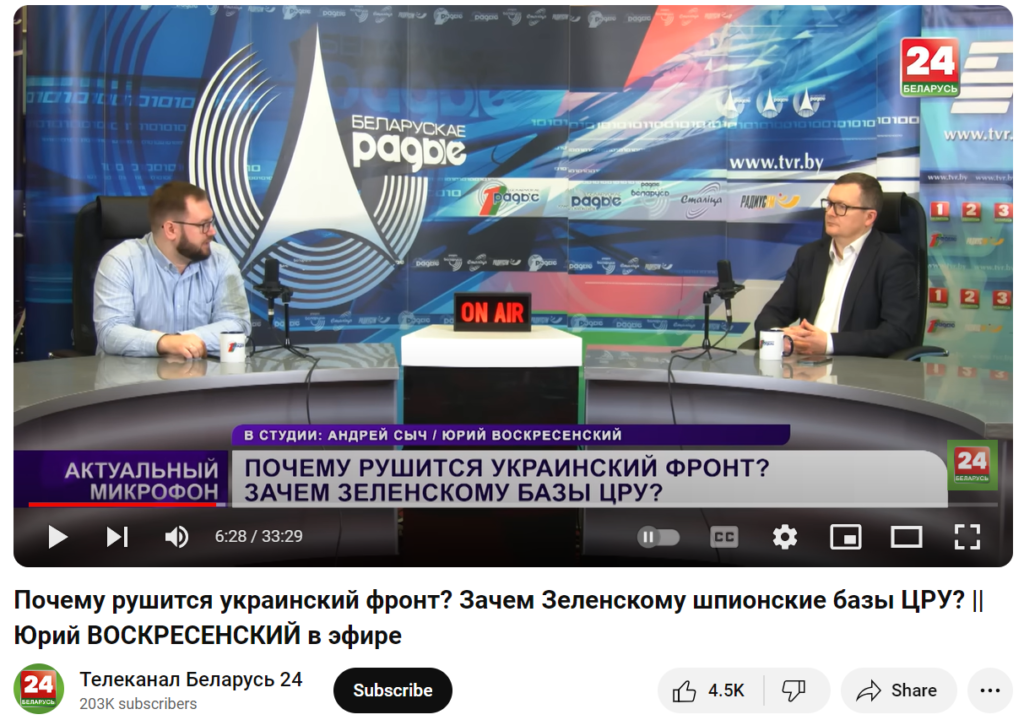
In another video, Yuri Voskresensky talks about how Ukraine cannot contain the aggression of the Russian Federation and further territory is being captured.
Conclusions: Coordinated efforts by Belarusian state media across various platforms to support Russian narratives combined with their own media control strategies reflect an intense information war aimed at shaping public perception and supporting Russia’s geopolitical agenda. This tactic not only underscores the challenges faced in combating disinformation but also highlights the critical role of social media in modern geopolitical conflicts.

